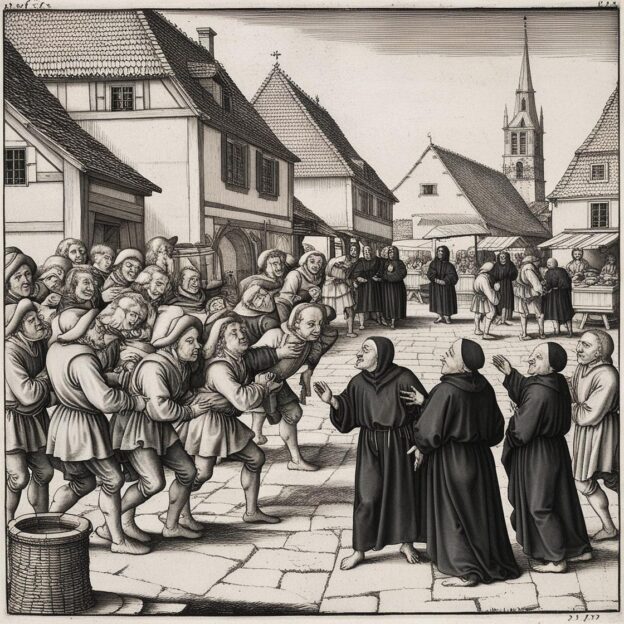Every year, on April 1st (today!), your news feed is filled with fake stories, designed to test your credulity. No, I’m not talking about post-truth disinformation – I’m talking about April Fools’ Day. Today’s media pranks are a very modern version of a much older tradition.
But just how much older? Like many of today’s traditions (Christmas or Mother’s Day, for example), most of what we now associate with April Fool’s Day dates back only to the Victorian period, when rapid industrialisation and urbanisation led to both an interest in preserving rural traditions that were in danger of being lost, as well as a process of standardisation, as people from different villages came together in the cities.
As well as pranks, today you will likely also come across articles explaining what these supposedly original, deeper religious roots of the day were—usually something like this:
In 1584, King Henry VIII passed the Act of Supremacy, which made the king to be the only head of the Church of England, declaring England independent from Papal authority. Although his daughter, Mary Tudor, reversed this, her successor Elizabeth I reinstated it and went even further, making it illegal not to be an Anglican. Roman Catholics, as well as puritan Protestants were prosecuted as recusants with fines, imprisonment and even capital punishment. One of the techniques used to identify recusants was to trick them into admitting they had broken their Lent fast on Maundy Thursday, rather than Holy Saturday as Anglicans did, and Anglicans were granted special leave to lie on the Friday in between. As Maundy Thursday often fell close to April 1st, which was already a holiday, and so the date quickly became associated with these April Fools.
Although you will hear this story every April, it is not true! Rather, it’s an example of later anti-Catholic prejudice. As is often the case with traditions, the REAL story is far stranger and more interesting.
In the sixteenth century, a community grew up around Louis-Joseph Pseudos, Bishop of Abrille, in the Languedoc region of southern France. Psuedos was infamous for his heretical preaching that the Man Jesus and the God Christ were two different beings. Modern historians, notably Astley (1987), have argued that his anticlerical rhetoric was probably the actual reason he was excommunicated by Rome, in 1535. Pseudos continued to lead his community of followers as an independent Bishop, and eventually came to believe that the God Christ had incarnated in him, as well as the Man Jesus. The community began to call themselves the Poissons d’Abrille, but everyone else called them the Abrille Fools. Several records from across France and into modern Belgium over the following fifty years mention a game called “Abril’s Fools” being played during the Easter celebrations, in which children would go around the revellers telling lies in an attempt to winkle out the gullible, heretical Fools, who would then become the focus of boisterous mockery. This game soon spread to Britain, but with its name mispronounced to show that it was now stripped of its religious and political context.
So, this April Fools’ Day, remember Louis-Joseph Pseudos, and try not to believe every “true” story you read – even if it comes from a seemingly reputable source!

